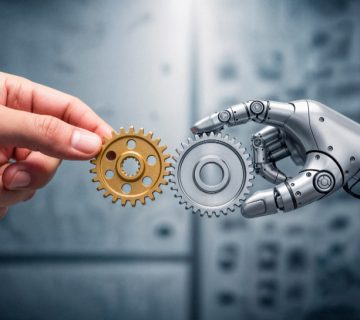Microlearning has emerged as a transformational approach to education, training, and personal development in an era when attention has become one of our scarcest resources. The method is rooted in cognitive science principles that align with how the human brain actually encodes and retrieves information. Unlike traditional lectures—where learners passively receive large volumes of content in one sitting—microlearning breaks knowledge into concise, sharply focused units designed to enhance attention, minimize cognitive strain, and optimize the timing of information absorption.
At its core, microlearning respects the natural limits of working memory. When learners are presented with too much information at once, the brain struggles to filter out what’s relevant. This is often referred to as “cognitive overload,” a common challenge in lengthy lectures. By contrast, microlearning delivers smaller, digestible pieces of content that fit comfortably within these cognitive boundaries. Learners can focus on one key idea at a time, which bolsters clarity and comprehension.
Modern learners often juggle multiple streams of information—emails, notifications, meetings, and social content—all competing for cognitive bandwidth. The microlearning model acknowledges this reality rather than attempting to force concentration through sustained attention spans that no longer reflect how people live, work, or learn. It integrates learning into the rhythm of daily life, whether through mobile-friendly lessons, short videos, interactive infographics, or brief scenario-based simulations.
Beyond cognitive efficiency, microlearning also thrives because it maps naturally onto how the brain stores knowledge long-term. Neuroscientific research suggests that frequent exposure to smaller chunks of information strengthens neural pathways and fosters retention more effectively than one large session of intense learning. The distributed nature of microlearning mirrors how the hippocampus consolidates memory through spaced, repeated exposure, leading to more durable learning outcomes.
In organizational and educational contexts, this shift has profound implications. Instead of one-off training sessions or semester-long courses anchored in static lectures, learning becomes a dynamic and continuous process. Companies now use microlearning to address specific skill gaps with rapid precision, while schools employ it to reinforce difficult topics through concise, spaced modules. The result is not just convenience—it’s a structural redesign of how knowledge is built, sustained, and applied in real-world contexts.
Microlearning also democratizes education by offering flexibility and autonomy. Learners can control their pace and path, revisiting content as needed and applying new insights immediately. This model prioritizes self-directed engagement, encouraging learners to take ownership of their growth instead of passively absorbing information. As digital life continues to accelerate and attention remains fragmented, microlearning stands out as a science-backed, learner-centered response to the cognitive, cultural, and technological dynamics of modern education.
The effectiveness of microlearning lies not just in brevity, but in strategic design. Short lessons deliver immediate, actionable knowledge, but they also integrate principles of how memory actually works. Spaced repetition—revisiting key concepts at strategically timed intervals—combats the “forgetting curve” and strengthens neural connections. Retrieval practice—testing oneself or applying knowledge in small intervals—further solidifies memory recall and understanding. Together, these methods transform passive reviewing into active engagement, which is crucial for embedding knowledge deeply and durably.
Breaking a complex subject into smaller learning units also allows for layering understanding over time. Learners can focus on mastering one aspect of a topic before adding more detail or tackling related concepts. This incremental approach mirrors the way people naturally learn in real life—through iteration, exploration, and reflection—rather than trying to absorb large amounts of data in one sitting. In this sense, microlearning is not just a tool for efficiency; it’s a philosophy of learning that embraces cognitive realism.
Engagement is another area where microlearning consistently outperforms traditional lectures. Long lectures can lead to mental fatigue and disengagement, especially when learners have little opportunity to participate or reflect. Microlearning, meanwhile, invites interaction through quizzes, scenarios, feedback loops, and multimedia storytelling. These elements cue emotional involvement and active thought, both of which improve retention and spark curiosity. Learners become participants rather than spectators, turning learning into a dynamic activity rather than a task to complete.
From an organizational standpoint, this shift has transformative potential. Microlearning reduces the time and resources required for training while producing measurable performance gains. When employees or students can quickly apply what they learn to real situations, knowledge becomes actionable rather than theoretical. This immediate transfer of learning reinforces motivation and builds confidence, encouraging continued participation and ongoing self-improvement.
Furthermore, microlearning is built for the digital infrastructure that defines contemporary life. Bite-sized lessons can be accessed anytime and anywhere—on a smartphone during a commute, between meetings, or as a quick refresher before a task. This level of accessibility supports just-in-time learning, where information is delivered exactly when it’s needed. The convenience and flexibility of this model empower continuous learning habits rather than sporadic bursts of training.
Perhaps most importantly, microlearning redefines what it means to learn effectively in a complex world. It honors the connection between mastery and momentum—each small success builds toward larger competence. Rather than overwhelming the learner, it fuels a sense of progress, turning abstract knowledge into practical capability. Over time, these micro-moments of learning compound into expertise, much like consistent, small investments accrue into significant returns.
In academic, professional, and corporate environments, where adaptability and agility are more valuable than ever, microlearning provides a blueprint for sustainable, high-impact education. It aligns with the realities of human cognition, supports autonomy and engagement, and creates a continuous feedback loop between learning and doing. The traditional lecture model is unlikely to disappear entirely, but its dominance is fading in the face of evidence that learning is most effective when it respects the way we think, remember, and grow—one focused, meaningful micro-moment at a time.





No comment